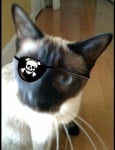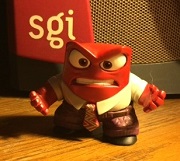If you liked old DEC gear, this is a great read. Part II, and the PDP-10 chapter is particularily a brilliant nostalgic read. I worked on KL10's and 20's in manufacturing, so I got a TON of equipment to play/work with. Next door, on the manufacturing floor was the FA&T (Final Assembly and Test) area, where the customers complete configuration was floorplanned, built and tested. There were quite a few complex configurations; some multiprocessor KL10's, AMPEX shared memory configs, IBM FIPS channel systems with dual spindle RP20's. This was all before Ethernet or VaxCluster came to town, although towards the end, there were some wonky looking adapters for both NI and CI - yes, there were 576-bit block formatted versions of the HSC50 and SDI disks for TOPS-20. So cooooooool a place to work, and the engineering was awesome. I got to see Jupiter before it was cancelled. What a shame... but we were not doing so well at that point. Anyway, the book:
http://research.microsoft.com/en-us/um/people/gbell/Computer_Engineering/contents.html
I really loved working on 36-bit gear, it was just HUGE! And working in-house; access to all the software was fantastic! The only thing to surpass that was playing Multiplayer VAXTrek on VT100's with the games creators up in Nashua, while 'we' were in Marlboro, using their bugs against them :-) There was nothing like a a Dreadnaught with tractor beams. Yum!
http://research.microsoft.com/en-us/um/people/gbell/Computer_Engineering/contents.html
I really loved working on 36-bit gear, it was just HUGE! And working in-house; access to all the software was fantastic! The only thing to surpass that was playing Multiplayer VAXTrek on VT100's with the games creators up in Nashua, while 'we' were in Marlboro, using their bugs against them :-) There was nothing like a a Dreadnaught with tractor beams. Yum!

DECUS Member 368596






 MyLoft() <<
MyLoft() <<















 <- MicroVAX 3500
<- MicroVAX 3500
 <- MicroVAX 3300
<- MicroVAX 3300







 -
-



